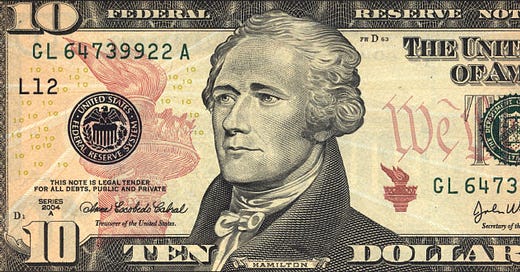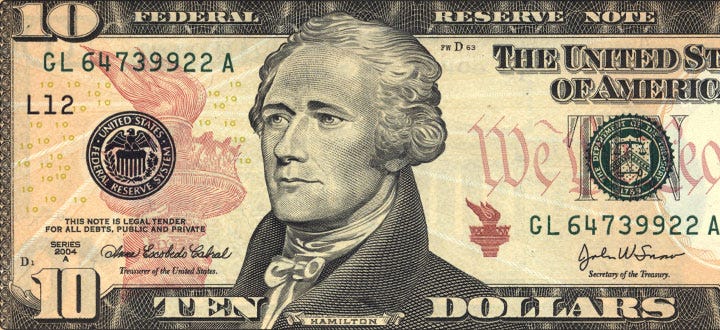The U.S. Treasury’s Unjust Debasement of Alexander Hamilton
By Richard M. Salsman
In mid-June, the U.S. Treasury Department announced a scheme by which it will either displace or demote Alexander Hamilton’s image on the $10 bill, in favor of a yet-to-be named woman chosen by some unspecified democratic poll. The woman will be named later this year, but the final change is scheduled for 2020, to mark the centennial of American women g…
Keep reading with a 7-day free trial
Subscribe to The Objective Standard to keep reading this post and get 7 days of free access to the full post archives.




